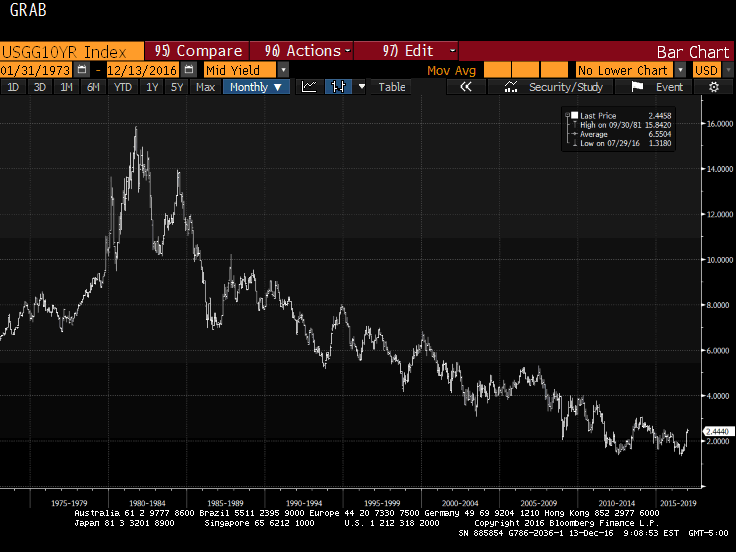The Bank of International Settlement asks in its quarterly report if there has been “a paradigm shift in the markets?” Although it does not provide an explicit answer, it does argue that there has been a significant change in sentiment. The chart of the US 10-year yield, created on Bloomberg, depicts the 35-year decline in US yields. The recent rise in yields can be seen, but there have been other counter-trend increases in the past.

The BIS notes that after falling to new lows, overall yields jumped dramatically by the end of November. The rise in yields was comparable to the taper tantrum in May-September 2013.
The key change, according to the BIS, was the US election. It recognizes that until then assets in the emerging market economies seemed unperturbed by the developments in the advanced economies, even though US bond yields were 50 bp off their lows by the time of the election in early November.

The election prompted a marked change in expectations. The BIS notes that investors were now anticipating expansive fiscal policy, lower corporate taxes, easier regulation and a boost to corporate profits. Indeed, as this Great Graphic from the BIS shows, the apt comparison is the election of Reagan in 1980. The rise in yields and S&P 500 since the US election were broadly similar since 1980, while the dollar’s rally has been stronger.
Our approach focused on the policy mix. The best policy mixed for a currency is tighter monetary and looser fiscal policy.We thought regardless of the election outcome the policy mix would become more favorable for the dollar.Both candidates promised fiscal stimulus, and Trump’s campaign promises were bigger, not only than Clinton’s pledges, but Sander’s as well.
Monetary policy had already begun the normalizing, albeit extremely slowly, though the commitment was there. The direction of monetary policy was clear prior to the election, and end of the inventory and capex-led headwinds saw the US economy return to above trend growth. Although fiscal policy may expand as much as it did during Reagan’s first time, monetary policy is most unlikely to match what Volcker did for the simple reason that the starting point for inflation diametrically different.











Leave A Comment